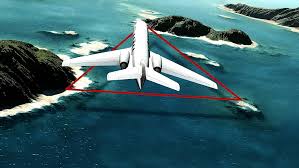The shipping industry has always played a vital role in connecting countries, fueling international trade, and supporting the global economy. With more than 90% of the world’s goods transported by sea, container ships are the backbone of maritime logistics. Among the giants that dominate the seas, one vessel has recently taken the spotlight—MSC Irina, the world’s largest container ship. Operated by the Mediterranean Shipping Company (MSC), this engineering marvel is not only a record-breaker but also a symbol of innovation, efficiency, and sustainability in modern shipping.
Introduction to MSC Irina
Launched in 2023, MSC Irina has set a new benchmark in the container shipping industry. With a capacity of 24,346 TEU (Twenty-foot Equivalent Units), it holds the record for the largest container vessel in terms of carrying capacity. Built by Yangzijiang Shipbuilding Group in China, MSC Irina is part of MSC’s ambitious plan to expand and modernize its fleet to meet the growing demands of global trade.
This ship is not just about size—it’s also about technology. Equipped with energy-saving features, advanced engines, and eco-friendly designs, MSC Irina reflects the shipping industry’s shift toward greener operations.
Key Specifications of MSC Irina
To truly appreciate MSC Irina’s scale and capability, let’s look at its specifications:
-
Capacity: 24,346 TEU
-
Length: Approximately 400 meters (longer than four football fields)
-
Width (Beam): About 61 meters
-
Depth: 33.2 meters
-
Draft: 16.5 meters
-
Flag: Liberia
-
Builder: Yangzijiang Shipbuilding, China
-
Operator: Mediterranean Shipping Company (MSC)
With these dimensions, MSC Irina surpasses most container ships in existence and redefines what it means to be a mega vessel.
The Role of MSC in Global Shipping
The Mediterranean Shipping Company (MSC) is the world’s largest container shipping line, surpassing Maersk in 2022. Founded in 1970 and headquartered in Geneva, Switzerland, MSC operates more than 760 vessels across the globe.
By introducing MSC Irina, MSC reinforces its dominance in global shipping while showing commitment to innovation and sustainability. The company aims to balance growth with environmental responsibility, and MSC Irina plays a central role in that strategy.
A Leap in Container Shipping Capacity
One of the standout features of MSC Irina is its immense cargo capacity. With over 24,000 TEUs, this ship can transport a staggering number of containers in one journey.
To put this into perspective:
-
A single voyage of MSC Irina can carry enough goods to stock thousands of supermarkets.
-
It can accommodate products ranging from electronics and machinery to clothing, raw materials, and food supplies.
By moving such massive volumes, MSC Irina contributes significantly to reducing overall shipping costs and improving trade efficiency.
Sustainability and Eco-Friendly Features
Shipping is often criticized for its carbon emissions and environmental impact. Recognizing this, MSC Irina has been designed with several green technologies:
-
Energy-Saving Devices: The ship features a shaft generator, air lubrication systems, and other energy-efficient equipment to reduce fuel consumption.
-
Exhaust Gas Cleaning Systems: These help reduce sulfur oxide emissions, ensuring compliance with IMO 2020 regulations.
-
Optimized Hull Design: The streamlined structure reduces water resistance, enhancing fuel efficiency.
-
Smart Engines: Equipped with advanced propulsion systems, the engines are optimized for better performance with lower emissions.
MSC’s investment in such technologies highlights its commitment to reducing the carbon footprint of shipping operations.
Strategic Importance of MSC Irina
The introduction of MSC Irina is not only a technological achievement but also a strategic move. As global trade continues to grow, larger ships are required to meet demand efficiently.
-
Efficiency in Global Trade: By carrying more containers in a single voyage, MSC Irina reduces the number of trips needed, cutting operational costs and environmental impact.
-
Port Infrastructure Development: Ports around the world, especially in Asia and Europe, must upgrade their facilities to accommodate mega vessels like MSC Irina. This includes deeper berths, larger cranes, and advanced logistics systems.
-
Global Competitiveness: Owning the world’s largest container ship strengthens MSC’s competitive position against rivals like Maersk, CMA CGM, and COSCO.
Challenges of Operating Mega Vessels
While MSC Irina is a marvel, operating such a massive ship also comes with challenges:
-
Port Limitations: Not all ports are equipped to handle a vessel of this size. Only major global ports with deep waters and advanced infrastructure can accommodate it.
-
High Operating Costs: Despite efficiency, the cost of maintaining and running such a giant vessel is significant.
-
Navigational Risks: Maneuvering such a large ship in narrow straits or congested ports requires advanced navigation systems and highly skilled crews.
-
Dependence on Global Trade: The profitability of mega vessels relies on high trade volumes. Any slowdown in international trade could impact their operations.
Symbol of the Future of Shipping
Despite these challenges, MSC Irina represents the future direction of container shipping: bigger, more efficient, and greener. It shows how the maritime industry is evolving to meet the dual demands of growing trade and sustainability.
The ship also serves as a reminder of the importance of shipping in our daily lives. From smartphones to clothing, many of the goods we use every day travel across the oceans in containers on ships like MSC Irina.
Conclusion
MSC Irina is more than just the world’s largest container ship—it is a milestone in maritime engineering, a step toward sustainable shipping, and a strategic asset for MSC in the global trade landscape. With its massive capacity, advanced technology, and eco-friendly design, it is a symbol of how the shipping industry is preparing for the future.
As international trade expands and environmental regulations tighten, vessels like MSC Irina will play a crucial role in balancing efficiency with sustainability. The ship is not only an engineering wonder but also a key player in shaping the next era of global shipping.
